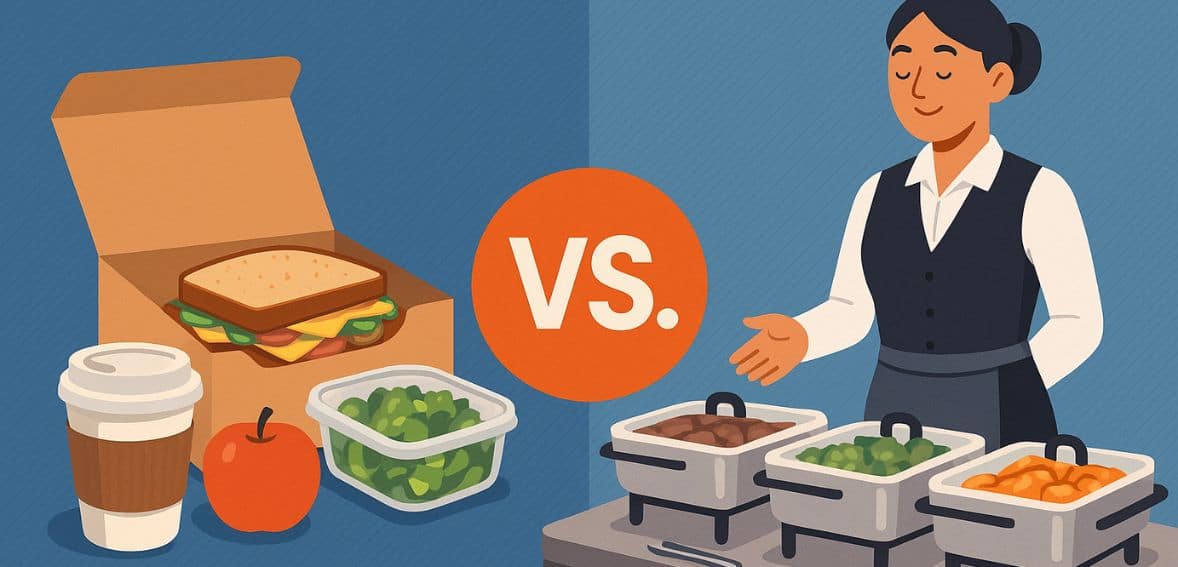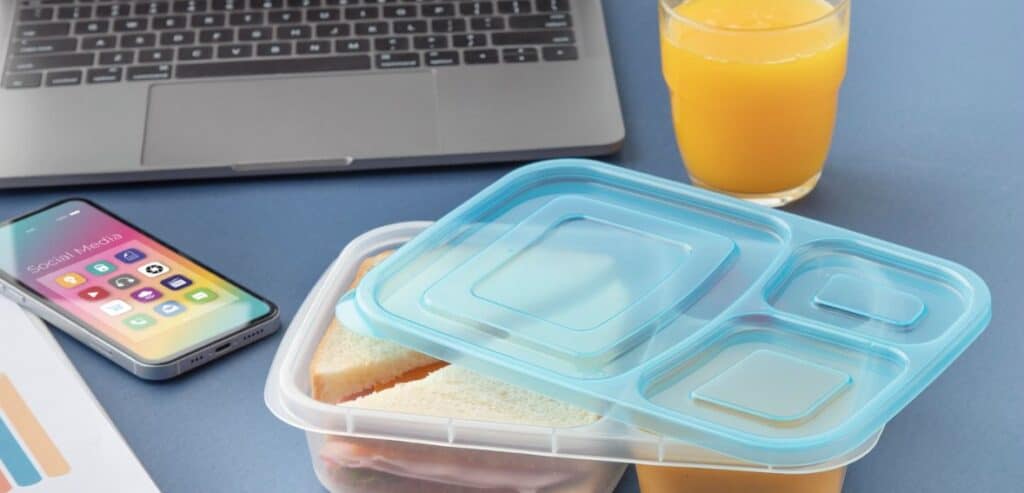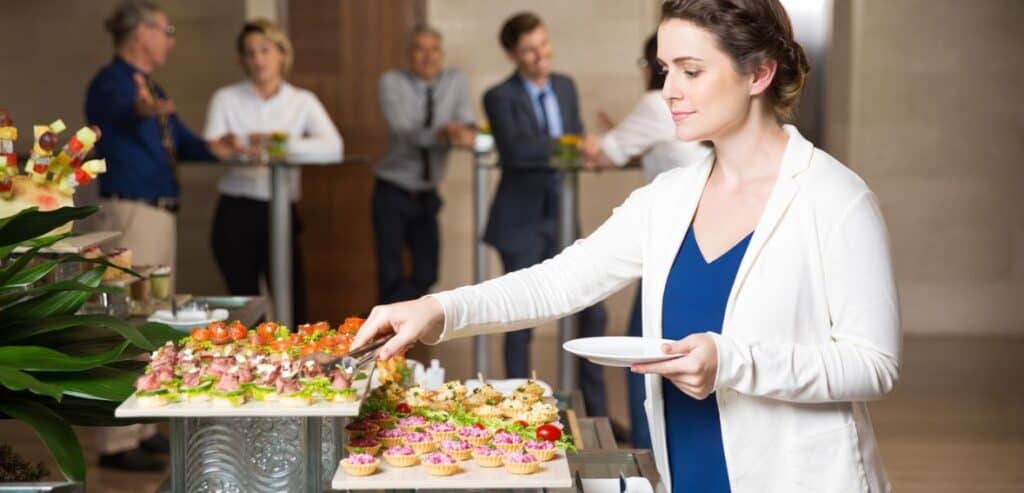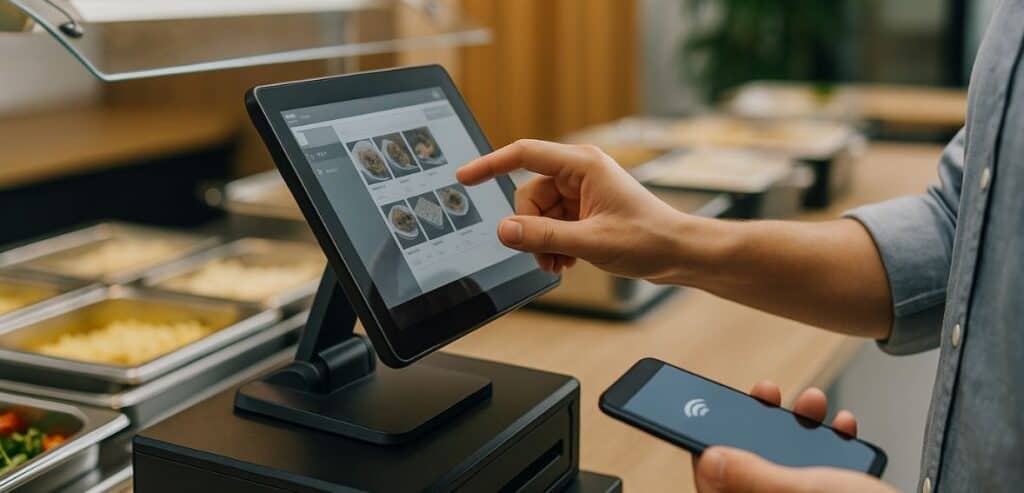
By Jaiden August 2, 2025
In today’s fast-paced corporate world, box lunches vs. buffet style catering is a key decision businesses face when planning meals for employees and events. Food delivery has evolved far beyond pizza boxes and casual takeout. Nowadays, businesses view catered meals as a strategic choice that affects logistics, company culture, and productivity in addition to being an employee benefit.
Whether feeding ten employees or organizing lunch for a conference of 200, the choice between box lunches and buffet style matters more than ever. Every choice has pros, cons, and implications for scalability. At a company-wide seminar, something that works for a team meeting could fail. As hygiene and customization demands increase, understanding the differences between box lunches and buffet-style options is crucial for effective planning.
Boxed Lunches: Personalization Meets Practicality

The focus on efficiency, food safety, and personalization has boosted the popularity of boxed lunches. In the box lunches vs. buffet style debate, boxed lunches excel in distribution and safety. Each meal is portioned, labeled, and packaged for one recipient, reducing cross-contamination and streamlining delivery. Employees pre-select meals, minimizing waste and errors, while simplifying budgeting and accounting for businesses.
Employees can select from a menu in advance with boxed lunches, which are ideal for companies that wish to provide variety without the chaos of a buffet line. This pre-selection removes uncertainty and reduces food waste. Boxed lunches provide consistency when expanding operations to several departments, remote employees, or various event venues. Errors and complaints are decreased because everyone gets what they ordered.
Boxed lunches also make budgeting and accounting easier, particularly for large deliveries. The number of units that were delivered, consumed, and left over is readily visible. While costs per person may appear slightly higher than bulk buffet options, the savings in time, reduced waste, and customer satisfaction often make up the difference.
Buffet Style: Variety, Community, and Logistical Hurdles

In contrast, boxed lunches just cannot match the flexibility and aesthetic appeal of buffet-style meals. The presentation itself enhances the dining experience when you arrange steaming vegetables, vibrant salads, and warm trays of hot entrees. Buffets promote social interaction, sharing, and movement—all of which are crucial for conferences, celebrations, and team-building exercises.
They also feel less like a convenience food and more like a complete meal. The catch? Logistics can be challenging. A buffet necessitates supervision for everything from setup and space needs to preserving safe temperatures and managing leftovers. Large trays don’t accommodate last-minute dietary requests or quick updates, serving utensils need to be cleaned, and staff may be required to keep an eye on lines. Buffets scale well when managed by experienced vendors, can turn chaotic without tight coordination.
Box Lunches vs. Buffet Style: Cost, Convenience, and Scalability
Businesses frequently base their decision between buffets and boxed lunches on cost. Boxed lunches save setup and staff time, but you pay for packaging, labeling, and personalization. Buffets introduce more uncertainty—how much food to order, who eats what, and how much will go to waste—even though they are frequently more affordable per serving because they are purchased in bulk. The effective cost may increase due to spills, open trays, or underutilized dishes.
The expenses of keeping food at safe temperatures, the possible need for additional staff to run the buffet line, and cleanup procedures are other factors that businesses must take into account. On the other hand, boxed lunches are already prepared and typically require little on-site preparation. For businesses that value consistency in their budgeting, this ease of use can be a welcome relief.
Operational Realities: Speed, Setup, and Clean-Up

How fast food can be delivered, set up, served, and removed is a major operational factor. Lunches in boxes provide a plug-and-play experience. Meals that have been carefully packaged and delivered by delivery drivers are distributed or placed at specified tables. Warming stations, food service personnel, and meticulous layout planning are not required. Buffets, however, need serving utensils, chafing dishes or warmers, table arrangements, and possibly linens or décor.
This can create a feeling of occasion, but it also requires more preparation, time, and work. After a buffet, cleanup is much more complicated—imagine trays, partially consumed food, and sauce spills. Boxed lunches, on the other hand, produce less mess because they are primarily packaged in disposable, frequently recyclable materials. For a business with several departments or meetings with limited time, boxed lunches reduce interruptions to workflow.
Food Safety and Compliance Concerns

Companies now have to carefully consider how meals are prepared, transported, and served due to stricter health and safety regulations. By doing away with shared utensils and dishes, boxed lunches lower many of these risks. Every meal is labeled for simple traceability, sealed, and packed in a sterile environment.
These precautions are mandatory in high-sensitivity settings like government, healthcare, and education. Sneeze guards, open-air trays, and shared spoons are just a few of the additional touchpoints that come with buffets. It’s more difficult to ensure that safety procedures are consistently followed, even with the right staff.
Boxed lunches are more compliant-friendly when delivering meals to remote employees or across several offices. The ease of use of sealed meals may make the higher price point worthwhile for businesses looking to steer clear of legal issues or reputational risks.
Guest Experience and Perceived Value
Safety and practicality are important, but so is the visitor’s impression. Buffets are a symbol of generosity and plenty. They provide second helpings, variety, and the option to customize a plate to one’s tastes. Because of this, they are particularly well-liked at parties or client-facing gatherings where hospitality is emphasized.
On the other hand, if boxed lunches are not presented with thought, they may come across as transactional. But the boxed meal experience has been improved by modern branded materials, carefully chosen menus, and elegant packaging. Boxed lunches can feel as carefully planned as a buffet, but in a different way, with personalized labeling, notes, and dietary requirements.
Boxed lunches are a great option for meetings, trainings, and productivity sessions, so it’s important to match the meal format with the event’s tone. Buffets, however, are perfect for social gatherings where food is part of the experience.
Scaling for Different Business Models
Every business scales differently. Boxed lunches might be more convenient for startups with dispersed teams, particularly if they’re sending meals to client locations or collaborating with remote workers. Buffets may be preferred for large team events by large corporations with centralized campuses and catering budgets.
Businesses that employ a combination of field, onsite, and remote workers may require a hybrid solution. Because orders can be processed digitally, matched with employee profiles, and routed through delivery software, boxed lunches are usually easier to scale. Buffets are most successful when held at locations with consistent attendance.
The secret is to align your company’s structure with the meal format that promotes productivity, inclusivity, and employee satisfaction. What is effective in one department or area may not be in another..
Tech and Ordering Systems: Modernizing Meal Management

Corporate meal planning and management are transforming as a result of technology. Online ordering platforms can automate reporting, gather dietary restrictions, and simplify selection for boxed lunches. Employees can log in, select meals, and get order confirmations, which lessens the administrative burden on HR.
Buffets can profit from technologies that predict attendance, track preferences, and provide data-driven catering adjustments, even though they are less tech-dependent. Businesses can make better decisions going forward by using tracking software to understand what is being consumed.
Businesses can measure customer satisfaction, track return on investment, and streamline the food service process by utilizing digital tools, whether they are selecting boxed meals or buffet arrangements. These systems provide the clarity required to maintain agility in rapidly growing organizations.
Flexibility and Customization in a Changing Workplace
The workplace of today is dynamic. Expectations for inclusivity have increased, employees work across time zones, and dietary preferences are more varied. With options like vegan, gluten-free, halal, nut-free, low-carb, and more, boxed lunches provide an unparalleled degree of customization.
Pre-ordering makes people feel appreciated and seen, which raises spirits. Buffets can try to accommodate these requirements, but it can be difficult to control cross-contamination or properly label trays in a hurry. Boxed formats are preferred for large-scale customization, particularly when a business has regular events or meal programs.
The capacity to accommodate individual needs without causing stress is a strategic advantage for teams that are expanding quickly or that are culturally diverse. With inclusivity and diverse dietary needs becoming a priority, companies are also looking at models like EBT programs worldwide to understand how meal benefits and accessibility are evolving globally, further shaping corporate catering expectations.
Making the Right Call: What Your Company Should Consider
So how do you choose between a buffet-style setup and boxed lunches? Start by evaluating your objectives. Is the purpose of this meal to foster a festive atmosphere for social interaction or to help focus during a long day of meetings? Are there any logistical limitations, such as those related to time, space, or delivery access? What kind of dietary accommodations are required, and how many people are you serving?
Your responses will aid in reducing the field. While buffets excel in environments that demand community, abundance, and longer meal breaks, boxed lunches win on convenience, personalization, and compliance. Exploring options for how to plan a corporate luncheon can also help ensure the meal format you select aligns seamlessly with your company’s goals and event needs. Above all, keep in mind that there is no one-size-fits-all solution; flexibility and a variety of vendors will help you be ready for any situation.
Conclusion: The Right Fit is the One That Works Long-Term
Ultimately, both buffet-style meals and boxed lunches have a function and can grow—if you know how to use them effectively. Boxed lunches help businesses seek control and predictability by lowering friction and standardizing experiences.
On the other hand, boxed meals cannot match the coziness, adaptability, and sense of community that buffets provide. Whichever path you take, the results will depend on your level of consistency, communication, and experience. Even though food is only temporary, the impact it has and the procedures you establish around it will affect the attitudes, productivity, and development of your team.
The ideal solution isn’t always the most affordable or the newest; rather, it’s the one that best fits your business’s values, operations, and long-term goals.
Leave a Reply